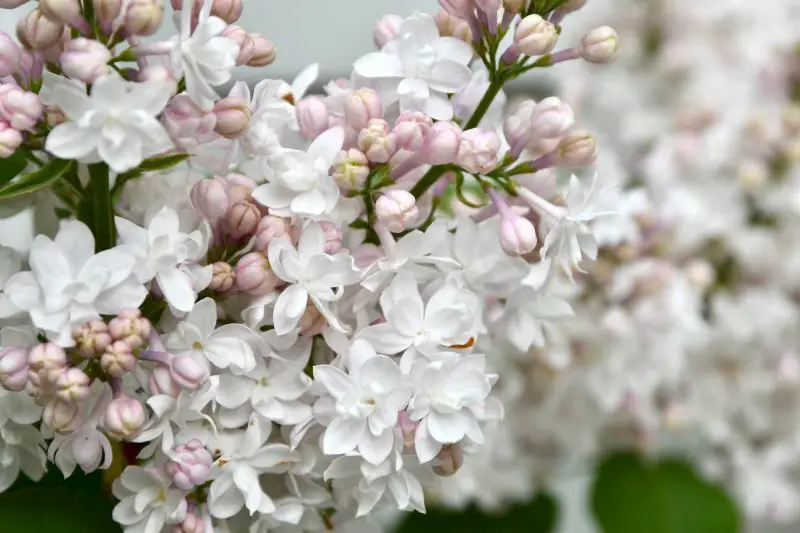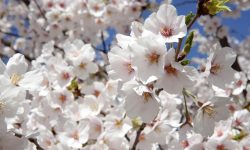Nothing says spring like a lilac bush bursting with colorful, fragrant blooms. These timeless shrubs fill gardens with beauty and a scent that lingers in the air. Lilacs grow best with regular care, proper pruning, and the right balance of sunlight and soil. When treated well, they reward you with full clusters of flowers every year.
Caring for lilacs is simple but requires consistency. Too much neglect or poor timing can reduce blooms and weaken the plant. They need rich soil, good drainage, and at least six hours of sunlight each day. With the right attention, lilacs can live for decades, growing stronger and more vibrant each season. This guide will show you exactly how to care for your lilac bushes so they stay healthy, fragrant, and full of life year after year.
Understanding Lilac Growth and Blooming Cycle

To care for lilac bushes successfully, you must first understand how they grow and bloom. Lilacs are deciduous shrubs that thrive in cool climates with cold winters and mild summers. Their growth begins in early spring when new shoots and leaves emerge from the previous year’s wood. These shoots mature through summer, preparing for the following year’s blooms. Lilacs set their flower buds in late summer or early fall, long before they go dormant for winter. This timing means pruning or cutting branches at the wrong time can remove next year’s blooms.
Lilacs usually bloom once a year, between mid-spring and early summer, depending on the variety and local climate. The blossoms last about two to four weeks, filling the air with their unmistakable fragrance. After blooming, the flowers fade and the plant redirects energy toward producing strong stems and next season’s buds. Providing enough sunlight—at least six hours daily—helps maintain this blooming rhythm. Without sufficient light, lilacs grow tall but produce fewer flowers. Understanding this natural cycle allows you to plan your pruning, watering, and fertilizing schedule more effectively.
During fall and winter, lilacs rest and conserve energy in their roots and stems. This dormancy is essential for bud formation and overall health. Colder temperatures actually strengthen the plant, triggering a more vibrant display in spring. In warmer climates, lilacs may need extra care to mimic that natural chill, such as planting in shaded spots with good airflow. Once you understand the rhythm of their life cycle, you can work with nature to keep your lilac bushes blooming beautifully, season after season.
Choosing the Right Location and Soil for Lilac Bushes
Sunlight Requirements
Lilac bushes depend heavily on sunlight to thrive and bloom at their best. These resilient shrubs flourish when planted in areas that receive at least six to eight hours of full, direct sunlight every day. Sunlight fuels the plant’s energy production, allowing it to create the large, fragrant clusters of blossoms that make lilacs so beloved. When deprived of sunlight, the plants often grow tall and spindly, with sparse flowers and weak stems. A bright, open area—free from tall trees or dense shrubs—is ideal. This ensures the plant receives enough light while maintaining good airflow, which reduces the likelihood of fungal infections.
In hot regions, lilacs appreciate protection from the harsh afternoon sun. A location with morning sunlight and gentle shade later in the day prevents leaf scorch while keeping blooms fresh. If your garden space is limited, try to plant lilacs where they can bask in direct morning sun for at least half the day. Light exposure also enhances fragrance intensity, meaning that sunnier locations will yield richer, more aromatic blooms. Strong sunlight not only promotes healthy flowering but also encourages better foliage color and overall plant vigor. By giving your lilacs the proper exposure, you set the foundation for years of abundant, show-stopping blooms.
Soil Conditions
Lilacs flourish in well-draining soil that allows their roots to breathe while holding just enough moisture to stay hydrated. They prefer soil that is slightly alkaline to neutral, ideally with a pH between 6.5 and 7.5. Heavy, compacted, or clay-rich soil traps water, which can suffocate roots and cause rot. If your soil tends to retain moisture, amend it with coarse sand, compost, or aged manure to improve drainage and fertility. Adding organic matter not only nourishes the soil but also encourages beneficial microbes that support root health and flowering.
For the best results, test your soil before planting. If it’s too acidic, lightly mix in garden lime to balance the pH. Avoid overfertilizing, as excess nitrogen encourages leafy growth at the expense of flowers. Once planted, mulch the base with organic material like shredded bark to conserve moisture and regulate temperature. This layer also prevents weeds from competing for nutrients. A rich, loose, and balanced soil environment helps lilac bushes grow deep roots that anchor them strongly and feed abundant, colorful blooms each year. Healthy soil ensures your lilacs remain vigorous, resilient, and stunning for decades.
Watering and Feeding Lilac Bushes Throughout the Year
Watering Lilac Bushes
Lilac bushes are fairly drought-tolerant once established, but consistent watering is essential for healthy root and flower development. Young plants, especially those in their first two years, need regular watering to encourage deep root growth. Water deeply once or twice a week during dry spells rather than giving light, frequent sprinkles. Deep watering helps the roots reach lower soil layers, where moisture remains more stable. For mature lilacs, natural rainfall is often sufficient, but during prolonged heat or drought, additional watering ensures continuous growth and prevents bud drop. Morning watering is best, as it allows foliage to dry before nightfall, reducing the risk of fungal disease.
Avoid overwatering, as lilac roots dislike soggy conditions. Always check the soil first—if the top few inches are dry, it’s time to water. During late summer, gradually reduce watering to allow the plant to prepare for dormancy. In winter, lilacs need minimal moisture, but in regions with little rainfall, occasional watering prevents the soil from becoming too dry. A layer of mulch helps retain moisture and regulate soil temperature year-round. Balanced watering not only supports lush foliage but also enhances the quality and longevity of spring blooms.
Feeding Lilac Bushes
Lilacs are not heavy feeders, but they benefit from light, strategic fertilization that supports strong growth and abundant blooms. The best time to feed them is in early spring, just before new growth begins. Use a balanced, slow-release fertilizer with equal parts nitrogen, phosphorus, and potassium—such as a 10-10-10 mix. This encourages healthy stems, rich green leaves, and robust flower clusters. Compost or well-aged manure can also serve as an excellent organic alternative. Spread it evenly around the base, keeping it a few inches away from the main stem to avoid root burn.
Avoid overfertilizing, particularly with nitrogen-heavy products, as this leads to excessive leaf growth and fewer flowers. Lilacs planted in fertile soil may only need feeding once every two or three years. After blooming, you can give the plants a light application of phosphorus-rich fertilizer to strengthen roots for the next season. Water well after feeding to help nutrients penetrate the soil. Consistent, moderate fertilization nourishes the plant without overwhelming it, resulting in fuller bushes, stronger stems, and an abundance of richly scented blossoms each spring.
Pruning Lilac Bushes for Healthier Blooms
Pruning is one of the most important steps in caring for lilac bushes and ensuring strong, abundant flowering every year. It keeps the plant healthy, encourages new growth, and prevents overcrowding of stems. The best time to prune lilacs is right after they finish blooming in late spring. During this period, the plant has already displayed its flowers but hasn’t yet started forming buds for next year. If you prune too late, you risk cutting off those developing buds, reducing next season’s blooms. For young lilacs, early shaping helps establish a strong framework, while mature bushes benefit from annual trimming to maintain balance and structure.
When pruning, start by removing any dead, diseased, or weak branches at their base. This allows better air circulation and prevents the spread of fungal infections. Next, thin out a few of the oldest stems—usually one-third of the plant each year—to stimulate new growth from the root base. This rejuvenation technique keeps the lilac vigorous and blooming consistently. Avoid cutting all the old wood at once, as sudden, heavy pruning can shock the plant and delay recovery. Always make clean cuts just above a healthy bud or branch to promote proper regrowth and prevent dieback.
After removing old or spent flower heads, trim lightly to shape the bush and maintain its natural form. Cutting just below the faded clusters stops the plant from wasting energy on seed formation, redirecting nutrients toward next year’s blooms. Use sharp, sanitized tools for smooth cuts that heal quickly. Consistent, careful pruning each year not only enhances flower production but also extends the lifespan of your lilac bushes. With this simple practice, you’ll enjoy fuller, healthier shrubs that burst into fragrant, colorful bloom every spring without fail.
Preventing and Treating Common Lilac Problems
Controlling Pests on Lilac Bushes
Lilac bushes are hardy, but they can still fall victim to pests such as aphids, borers, and scale insects. These pests feed on sap, weaken the plant, and may distort leaves or stunt new growth. Regularly inspecting your lilacs, especially in spring and early summer, helps catch infestations before they spread. Aphids often cluster on the underside of young leaves, while borers create small holes in stems. A strong stream of water can remove light aphid infestations, while neem oil or insecticidal soap works well for more severe cases. These natural treatments are gentle on the plant but effective against soft-bodied pests.
Encouraging beneficial insects like ladybugs and lacewings also helps maintain a natural balance. Healthy lilacs are less likely to attract pests, so keeping your bushes well-fed and properly watered strengthens their defenses. Remove any damaged stems or leaves promptly to prevent pests from spreading. If borers are a recurring issue, prune out affected wood and dispose of it away from your garden. Avoid chemical pesticides unless the infestation is severe, as they can harm beneficial insects. Consistent monitoring and natural control methods keep lilac bushes thriving and pest-free throughout the growing season.
Preventing Fungal and Bacterial Diseases
Fungal diseases like powdery mildew and bacterial blight are common issues that can affect lilac foliage and flowers. These diseases thrive in damp, crowded environments with poor airflow. To prevent them, prune your lilacs regularly to open up the canopy and allow sunlight to reach all parts of the plant. Powdery mildew appears as a white, dusty coating on leaves, while blight causes dark spots and wilting. Both can weaken the plant if left untreated. Spraying leaves with a mild baking soda solution or neem oil helps reduce fungal growth naturally.
Proper watering habits also play a major role in disease prevention. Always water at the base of the plant rather than overhead to keep leaves dry. Avoid watering late in the day, as lingering moisture encourages mildew formation overnight. If an infection occurs, remove affected leaves immediately and dispose of them—never compost diseased plant material. For severe cases, use a fungicide labeled for lilacs, following the directions carefully. Keeping the area around your lilacs clean and debris-free further minimizes disease risks. Good airflow, proper pruning, and dry foliage are your best defenses against most lilac diseases.
Reviving Stressed or Neglected Lilacs
Even healthy lilacs can become stressed if neglected for too long or planted in poor conditions. Signs of stress include yellowing leaves, reduced blooms, and sparse new growth. To revive struggling plants, start by pruning out old, dead wood to encourage new shoots from the base. Apply a balanced, slow-release fertilizer in spring to give the plant a nutrient boost. Water deeply once a week during dry periods, ensuring the soil stays moist but not soggy. Restoring healthy soil conditions often triggers fresh, vigorous growth within a single season.
If your lilacs have gone several years without blooming, heavy shade or improper pruning may be to blame. Relocate them to a sunnier area or thin nearby trees to increase sunlight exposure. Avoid cutting during late summer or fall, as this removes next year’s flower buds. Patience is key—revived lilacs may take one or two years to bloom fully again, but they usually come back stronger. With consistent care and timely maintenance, even old or neglected lilac bushes can return to their full glory, filling your garden once more with fragrant, colorful spring blossoms.
Propagating Lilac Bushes to Expand Your Garden
Propagating lilac bushes is a simple and satisfying way to expand your garden without buying new plants. By growing new lilacs from your existing bushes, you can maintain the same beautiful color, fragrance, and resilience that you already love. The most common and successful methods for propagation include taking cuttings, dividing suckers, or layering stems. Each method allows you to reproduce lilacs true to the parent plant, ensuring the same blooming characteristics. The best time to propagate is in late spring or early summer, after flowering but before the plant sets new buds for the next year. With patience and the right technique, you can quickly turn one healthy lilac into several thriving shrubs.
One of the easiest methods is using suckers, which are shoots that grow from the base of mature plants. Carefully dig around the sucker, making sure it has its own root system, then replant it in a sunny spot with loose, well-drained soil. Water it thoroughly and keep the soil moist until the new plant establishes itself. Cuttings also work well—select a softwood cutting about six inches long, dip it in rooting hormone, and plant it in a mix of perlite and peat. Within a few weeks, roots should begin to form, and your new lilac will be ready for transplanting into the garden.
Layering is another effective propagation method, ideal for gardeners who prefer a low-maintenance approach. Simply bend a flexible branch toward the ground, cover part of it with soil while keeping the tip exposed, and secure it in place with a small rock or pin. Over time, roots will develop where the stem touches the soil. Once the roots are well established, cut the new plant from the parent bush and transplant it. Propagation not only multiplies your lilacs but also keeps your garden lush and cohesive. Each new plant carries the same charm and fragrance, ensuring a continuous legacy of beautiful blooms for years to come.
Seasonal Lilac Care Guide
Spring Care
Spring marks the beginning of the lilac’s active growth cycle, and it’s the most important time for maintenance. As soon as the snow melts, remove any winter debris from around the base of the plant to allow air circulation. Apply a thin layer of compost or well-aged manure to enrich the soil and stimulate new shoots. Prune any dead or damaged branches before buds open, ensuring the plant directs energy toward healthy growth. Consistent watering during early spring helps the roots wake up and supports strong bud formation. Once the blooms appear, enjoy their fragrance but remember to deadhead faded flowers promptly—this encourages the plant to focus on next year’s buds instead of producing seeds.
Spring is also the ideal time to inspect for pests or diseases. Look for signs of aphids or mildew and treat them early with natural sprays or pruning. Fertilize lightly after flowering to replenish nutrients used during bloom production. Keeping your lilac well-fed and hydrated through spring ensures a healthy, vibrant display that will continue to impress throughout the season. Proper spring care sets the stage for vigorous summer growth and abundant flowering next year.
Summer Care
During summer, lilacs shift from blooming to developing new wood and buds for the next year’s flowers. Water deeply but infrequently to encourage strong root systems, especially during heatwaves or dry spells. Avoid watering late in the evening to prevent fungal issues on leaves. Applying mulch around the base helps conserve moisture and regulate soil temperature. Lilacs appreciate slightly cooler soil, even in hot weather. Monitor the plant’s overall health and trim any shoots growing inward to maintain open airflow within the canopy.
Summer is also the season for light shaping if necessary. Remove any spent flower stems or unwanted suckers, but avoid heavy pruning, as it can remove developing buds. Keep weeds at bay to reduce competition for water and nutrients. If you notice slow growth, add a small amount of compost or balanced fertilizer to maintain vigor. Focus on maintaining steady moisture, pest control, and sunlight exposure. By supporting the lilac’s growth through the summer, you prepare it for a successful dormancy and strong blooms in the next spring.
Fall and Winter Care
As temperatures cool, lilacs begin to enter dormancy, conserving energy for the coming year. Fall care focuses on preparing the plant for winter while maintaining soil health. Stop fertilizing by mid-autumn, as late feeding can encourage new growth that won’t survive frost. Instead, apply a layer of organic mulch—such as bark or straw—around the base to protect the roots from freezing temperatures. Water thoroughly before the ground freezes to provide enough moisture for winter survival.
During winter, lilacs require little attention, but periodic inspection helps prevent damage. Brush off heavy snow from branches to avoid breakage and check for signs of rodent activity near the roots. Avoid pruning during winter, as this can expose the plant to cold injury. Once spring approaches, remove mulch gradually to allow new shoots to emerge. Consistent seasonal care ensures your lilac remains healthy year-round. By adapting your maintenance to each season, you’ll keep your lilac bushes resilient, beautiful, and ready to burst into color every spring.
Common Mistakes to Avoid When Caring for Lilacs
Pruning at the Wrong Time
Pruning lilacs at the wrong time is one of the most common and costly mistakes gardeners make. Lilacs bloom on old wood, meaning their flower buds form soon after the current season’s blooms fade. If you prune in late summer, fall, or early spring, you unknowingly remove those developing buds, leading to little or no flowering the following year. The correct time to prune is immediately after blooming ends—usually late spring to early summer. This allows enough time for the plant to recover and form next season’s buds before winter. Always focus on removing dead or diseased branches, as well as thinning older wood to improve airflow and encourage new shoots.
Over-pruning can also weaken your lilac and delay flowering for several years. For older, neglected bushes, use rejuvenation pruning instead of cutting the entire plant back at once. Remove about one-third of the oldest branches each year over a three-year period to renew the plant gradually. This method preserves the lilac’s natural shape and blooming ability while encouraging healthy, vigorous growth. By timing your pruning correctly and avoiding excessive cuts, you’ll maintain a strong, balanced lilac that rewards you with lush, fragrant flowers every spring.
Overwatering and Poor Drainage
Many gardeners assume lilacs, like other flowering shrubs, need frequent watering—but this often does more harm than good. Lilacs prefer slightly dry soil between watering sessions and will suffer if their roots stay constantly wet. Overwatering leads to root rot, leaf yellowing, and increased susceptibility to fungal diseases. The soil around lilacs should feel moist but never soggy. Always water deeply rather than frequently, allowing the moisture to penetrate down to the roots. This promotes deeper root systems and greater drought resistance.
Proper drainage is essential for lilac health. Avoid planting them in low-lying areas where water collects after rain. If you have heavy clay soil, amend it with compost, coarse sand, or organic matter to improve aeration. Raised beds can also help prevent waterlogging. Mulching around the base helps regulate soil temperature and retain just the right amount of moisture—but keep mulch a few inches away from the stem to avoid rot. Striking the right balance between hydration and airflow keeps your lilacs strong, disease-free, and able to bloom vigorously each year.
Ignoring Sunlight and Air Circulation
Lilacs love sunlight, and without enough of it, they can’t reach their full potential. One of the most frequent reasons for poor blooming is lack of adequate light. Lilacs need at least six to eight hours of direct sunlight daily to produce strong, colorful flower clusters. When planted in shade, they grow tall and sparse, with few blooms and weak branches. Choose an open location away from trees, fences, or buildings that might block sunlight. Morning sun is especially beneficial, as it helps dry dew on the leaves, reducing the risk of fungal infections.
Air circulation is another key factor that many gardeners overlook. Planting lilacs too close to each other restricts airflow, creating humid conditions that foster powdery mildew, blight, and leaf spot. Proper spacing allows air to move freely through the foliage, keeping it dry and healthy. Prune regularly to remove crowded branches and keep the canopy open. Avoid planting lilacs against solid walls where heat and humidity can build up. With ample sunlight and ventilation, lilacs grow stronger, produce more buds, and maintain their signature fragrance and beauty throughout the season.
FAQs About Caring for Lilac Bushes
When is the best time to prune lilac bushes?
The best time to prune lilac bushes is immediately after they finish blooming in late spring. Pruning at this time allows new growth to develop and set flower buds for next year. Avoid pruning in late summer or fall, as it removes buds and reduces next season’s blooms.
How much sunlight do lilac bushes need to bloom well?
Lilacs need at least six hours of direct sunlight daily to produce abundant flowers. Full sunlight encourages strong stems and vibrant blooms, while too much shade leads to weak growth and few blossoms. The more sun your lilac receives, the more impressive its spring display will be.
Why is my lilac bush not blooming?
A lack of blooms can result from insufficient sunlight, improper pruning, or overly rich nitrogen fertilizer. Lilacs bloom on old wood, so pruning too late in the season removes the next year’s buds. Ensure they receive full sun, moderate feeding, and well-draining soil for optimal flowering.
How often should I water lilac bushes?
Established lilacs need deep watering about once a week during dry periods. Young plants require more frequent watering to establish roots. Always water at the base of the plant early in the day. Overwatering can cause root rot, so allow the soil to dry slightly between waterings.
Can lilac bushes be grown in pots or containers?
Yes, lilacs can grow in large pots, especially dwarf varieties. Use well-draining soil and ensure the container receives full sunlight. Water regularly and feed lightly during spring and summer. Repot every few years to refresh the soil and maintain root health for continued blooming.
Conclusion
Caring for lilac bushes is a simple yet rewarding process that fills your garden with color, fragrance, and timeless beauty year after year. With the right balance of sunlight, pruning, and nourishment, these hardy shrubs will thrive for decades. Understanding their seasonal needs helps you provide the perfect environment for strong roots and abundant blooms. Whether you’re tending an old lilac or nurturing a new one, consistent care ensures healthier plants and more spectacular flowers each spring. Every blossom is a reminder that patience and attention turn a lilac bush into a lasting symbol of renewal and joy.






